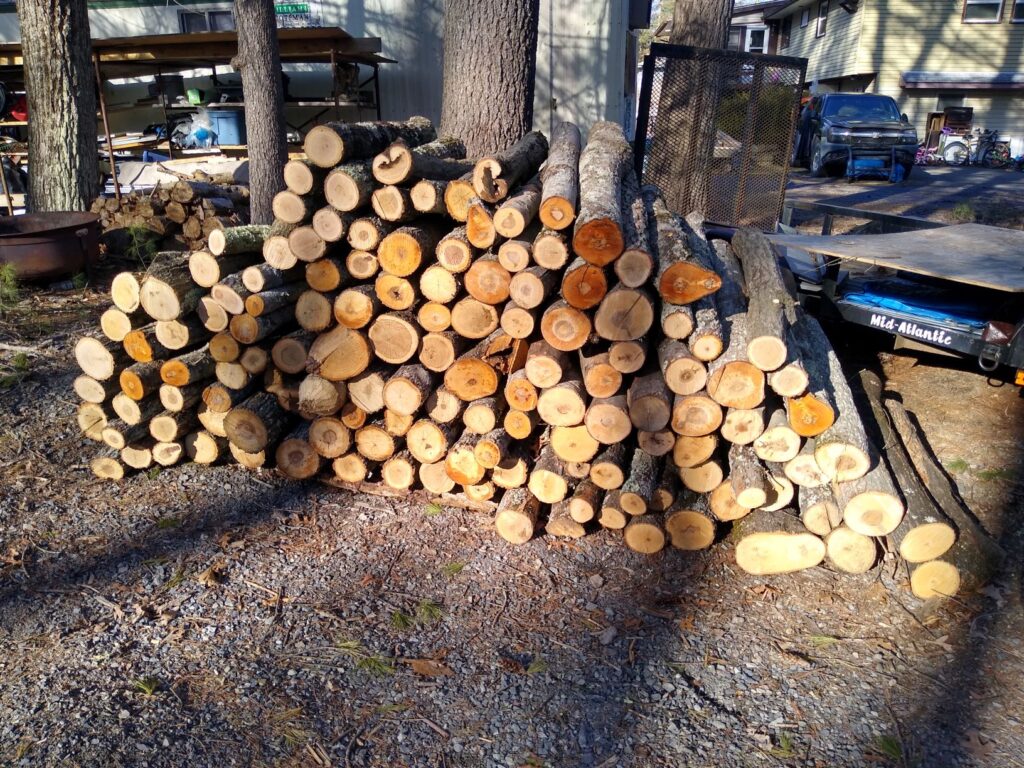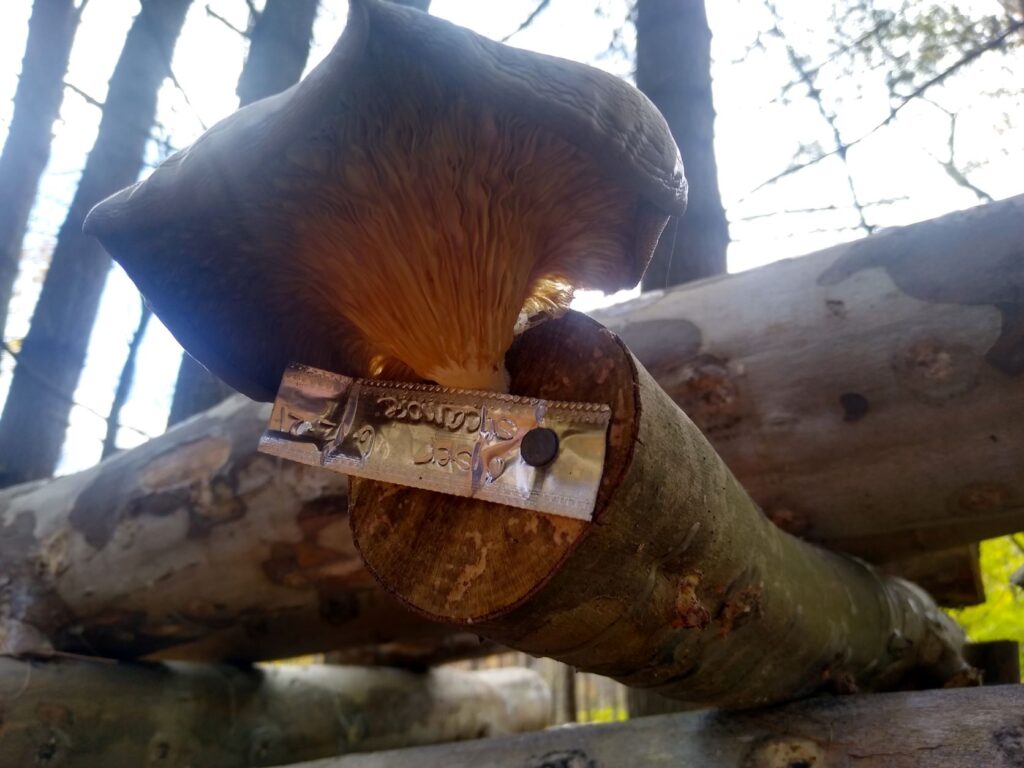Much like the artist that always had it in the back of his mind to create a portrait of the back of his/her thumb, I have been meaning to create a dedicated page here to answer this one single question. I could be at a party, or a bar, or a diner, or local convince store, or logging supplier and it makes no matter, this is a question I get asked. Each person asks it from a different perspective, and they ask it in a different way, but they all ask it. Still the frequency of this question has not diminished so I am taking time now just to make a page to answer that question.

A mushroom log is one cut specifically for the cultivation of Mushrooms, usually in a forest environment. The size of the log is to suit the grower’s needs but generally it is between 36 and 48″ long and between 4 and 8″ diameter. The log must be ‘clean’, that is, no rot, disease, or bug infestations. It must be healthy and green for a living tree. The bark must be largely intact with few, if any, scars from dragging. The logs can weigh between 12 and 60 pounds.
The methods for harvesting logs is almost entirely manual. The reason for this is the care that must be taken to keep the bark intact and the log undamaged.. Trees are selected that are planned for removal for some other reason such as overgrowth, damaged sections (weather or wildlife), poor shape, required thinning for forestry management, or other reason. I never cut trees just to get logs, there has to be a second reason. These trees are felled with care to avoid damage to them o the surrounding trees, then marked to the desired lengths and bucked into logs. Each one is picked up by hand and carried to a transport vehicle, such as a pickup, ToolCat, or Mule and moved out to the landing where they are loaded (again, by hand) onto a different vehicle or trailer for delivery or transport to storage awaiting pickup.
The species of tree used must be compatible with the species of mushrooms to be grown. You can find charts on the internet for this, but basically for Shiitake Mushrooms (by far the most popular with growers) any Oak (Red, White, Chestnut, etc) is very good as is Sugar (hard) Maple. Red maple is unacceptable. Hophornbeam is good, and the list goes on. There are no conifer (softwoods like pine) species that are good for cultivation and only hard woods are used. Growers select species of trees based on experience or the charts and advice they get from seasoned growers.
So the logs are secured in some fashion, either bought or self cut by the grower. The next step is inoculation. Holes are drilled along the length of the log about 5/8″ by about 1.5″ deep every 4-6″. This row of holes is repeated and staggered around the perimeter of the log. There are special drills to make this go fast, but standard drills will work just fine, but a bit slower.
Gowers purchase sawdust spawn to inoculate these logs with. These carry the desired strain of mycelium to get the desired mushrooms growing in that log. Using a special tool filled with the spawn, they pack each of the holes filling them nearly to the top. To keep the spawn in, and keep bugs out, the holes are them covered over with a coat of wax either paraffin, beeswax, or a combination of both.
As a final step, most growers will then make a permanent (aluminum) label for each log listing the date, wood species, and mushroom species which is attached to the log. This allows for performance or research tracking over time. The logs are then stacked in some style such as a ‘4 square’ log cabin style, a teepee style along a rail or wire, or some other configuration. There are many methods used but the commonality in all is that air must circulate around the entire log as much as possible. The logs must also be shaded in a cool spot, such as thicker woods to keep the sun from drying them out.
The logs then sit for months while the mycelium spreads within the logs, decomposes the sugars and other nutrients in the logs forming a network through the entire log. In about 6-8 months, the first ‘flush’ can be expected if it’s in the proper season. There after Shiitakes can be forced to begin a flush by soaking or watering the logs heavily for 24 hours, then restacking (some growers ‘thump’ the log also which is said to simulate a tree falling). Logs can complete a flush cycle in about 7 weeks, so some growers will rotate the force cycles with groups of logs to have a different group flushing each week through the growing season. A decent sized log can bear fruit for 5 years or more.
Now, aren’t you glad you asked?

